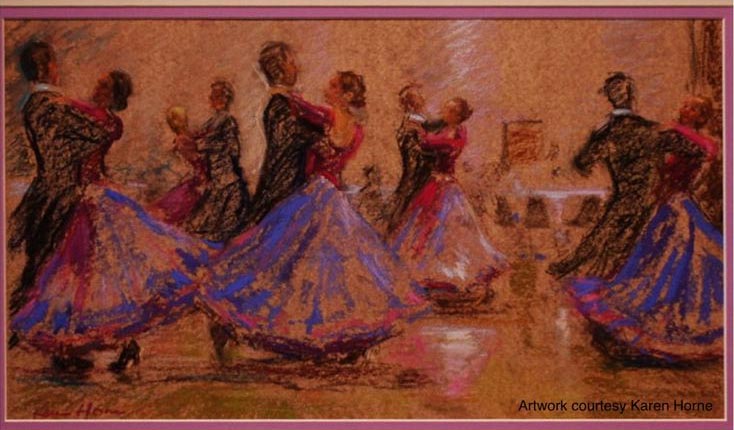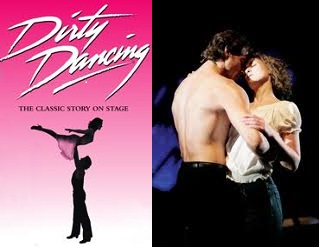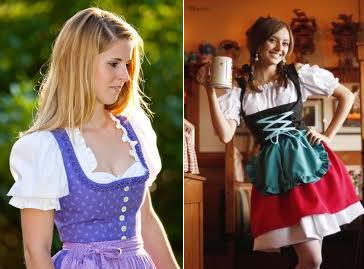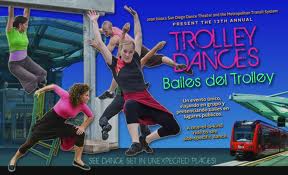There are a few perennial New Year’s Resolutions that are made, and usually broken. While social dancing, per se, does not appear in most popular top ten resolutions, it likely is a good possibility for at least two of the top ten—getting fit and learning something new. And it should be a particularly good choice because it is a lot less demanding than many of the alternatives.
Category Archives: General
Annual Country Dance World Championships in Nashville December 30-January 5
This is a must for enthusiastic dancers to country western music–including polka, triple two-step, nightclub two-step, cha cha, waltz, (cowboy) two-step, east coast swing, and west coast swing—the eight dances whose competition is sanctioned by the UCWDC (United Country Western Dance Council). Held at the Gaylord Opryland Resort and Convention Center, it includes not only competitions and workshops, but also social dancing, shows, shopping, parties, and more. Check it out at UCWDC Worlds. See you there!
“Dirty Dancing” Musical Puts Romance Back into Couples Dancing
The famous “lift” (don’t’ try this at home) that is the signature image of this movie is just its public face … which is rated by one expert as the sixth most famous dance pose in all movies ever. But there is lots going on behind the scenes in this drama. Impressive as it was on the big screen in its 1987 debut, we had “the time of our life” seeing it on stage in London this month. The male lead Johnny, Paul-Michael Jones, is a British champion Latin and Standards dancer, so had plenty of dancing talent. And while there are a lot of choreographed “theater art” moves in both the movie and this stage version, there are also a lot of scenes of young couples doing sexy dance steps that shocked their waltz-and-foxtrot-oriented parents. We don’t know if any of many “millenials” (under 30’s) have watched this, but we’d bet that they would find it at least as interesting as the newer version of “Footloose”. Not surprisingly in show business, there is a story behind the story, as detailed in this 25th anniversary tribute.
Can the Rebirth of the Dirndl Help Boost the Popularity of the Polka?
The more we do the polka, the more we like it. It is the fastest social dance widely done today, so it’s good exercise. And it seems pretty tolerant to less-skilled dancers. If you learned in your childhood how to skip, you already know the basic step. And if your turn doesn’t get done in two measures, take four to do it. (But please remember to move along line of dance.) And since it’s Oktoberfest season right now, with the most popular destination being Munich, in the heart of Bavaria, it’s time for those who own traditional clothes—lederhosen and dirndls—to struggle into them. But, along with the increasing popularity of German comedians who are poking fun at Germany according to The Wall Street Journal is the increasing popularity of the dirndl … though the latest designs are departing from traditional colors and styles according to The New York Times. While women may say that every man looks better in a tuxedo (a good possibility if the alternative is lederhosen), it is likely that men would say that every woman looks better in a low-cut, tightly-laced traditional dirndl.
Trolley Dances in San Diego Oct. 5-6, Riverside Oct. 19, San Francisco Oct. 19-20
Today when two political parties—members of closely-related species–in Washington can’t agree on anything, it seems incredible that two very dissimilar species–a dance choreographer and a metropolitan transit system—could forge an alliance. But according to The New York Times choreographer Jean Isaacs and the San Diego Metropolitan Transit System did just that in 1998, and this year celebrate their 15th anniversary (San Francisco picked up on the idea five years later so theirs is their 10th). Yeah, we know it’s not couples dancing (no cha cha’s or waltzes), but it IS social (or at least sociable) dancing. And the audience does a lot of the moving, as they board public transit, alight at various stops, and watch 10-minute dance routines (often in imaginative venues).
Viennese Waltz Ball in San Francisco on November 2

Viennese waltz balls are the most elegant of all social couples dancing events. The venues are as high end as you can get; in Vienna itself—which has over 150 balls each winter–many are held in the largest and most historic palaces. Ladies and gentlemen are dressed in their finest: floor-length ball gowns for ladies and white tie and tails for gentlemen. And the people are urbane; one year we exchanged cards with one couple with homes in San Francisco, London, and Vienna itself and another who had flown a very small plane the full length of North and South America. The San Francisco event—the Annual Gala Autumn Viennese Waltz Ball— is held by the San Francisco Waltzing Society, which dates to the early 1950’s. This year it is being held at the historic Hotel Whitcomb. As in recent past years it features the 30-piece Saratoga Symphony playing the music of Johann Strauss and other famous composers. There will also be a special performance by Dance Libre.
Annual Dance Conference Excels
The dance world is rapidly reaching critical mass, if developments at the combined conference of the World Dance Alliance-Americas (WDA-A) and the Dance Critics Association (DCA) held at the one-of-a-kind Scotiabank Dance Center in Vancouver, BC, Canada during July 29-August 4 are any indication. Highlights included world-class innovative dance routines, strong coverage of the burgeoning urban dance category, a brand-new dance journal, expansion of the WDA to Europe with a fully worldwide conference in Angers (France) in 2014, and a massive government effort to catalog and measure dance in all its forms within Canada. The event was all the more noteworthy because the two organizations are all-volunteer ones, so all the heavy lifting was being done as a labor of love. WDA-A Conference Committee Chairman Scott Martin was everywhere, and did a terrific job before and during the event
The conference focused on dances that are performed for audiences, so the only participants who actually dance are the performers on stage, who take part in “concerts”. In social couples dancing, which—with the exception of Wilddancer—was essentially unrepresented at this conference, there is no audience, everyone participates, and the events are called “parties”. But the WDA-A seems happy to include all forms of dancing, so we will likely see and hear more about social couples dancing in the future, with support from Wilddancer. And with the strong feeling that the organization wanted to be inclusive, to welcome all forms of dance, and to chronicle changes in the dance world as they happen, the WDA-A is in a strong position to grow and adapt. We expect that social couples dancing will be the beneficiary as rhythms and movements from other categories, or even whole new dances, are integrated into what is already being practiced in ballrooms and club venues. We are particularly interested to see what, if any, changes will come via a flow from urban dance (AKA hip hop or break dancing), which is already a social phenomenon but not specifically for couples.
(During the DCA portion of the conference veteran critic George Jackson pointed out an interesting overlap between ballet and lindy hop. Pioneering dance critic Carl Van Vechten wrote in 1930 that the new Lindy Hop would likely follow the pattern he had observed with the Cake Walk, Bunny Hug, Turkey Trot, Charleston, and Black Bottom, in which roughly every decade a black dancer would invent a new step that would become popular with black (and sometimes with white) dancers. Whether or not it was ever done, Van Vechten pointed out that the Lindy Hop “could be danced, quite reasonably, and without alteration of tempo, to many passages in the Sacre du Printemps [Rite of Spring] of Stravinsky” (see Swinging the Machine: Modernity, Technology, and African American Culture between the World Wars, by Joel Dinerstein, University of Massachusetts Press, 2003.))
Comprehensive Study to Document Whole Canadian Dance Scene
Of great significance to the Canadian dance scene is the ambitious Canada Dance Mapping Study, discussed in some depth during the combined conference of the World Dance Alliance-Americas (WDA-A) and the Dance Critics Association (DCA) in Vancouver, BC, Canada during July 29-August 4. Inspired by ones conducted in the United Kingdom, New Zealand, and two other countries (none has ever been done in the United States), the Study is notable because it is a cooperative effort among national, provincial, and municipal government bodies. (Appropriately, the research team also includes a “B-Boy” break dancer.) All sorts of dancing, including a range of folk dancing (notable are the numerous Ukrainian dance groups in the Manitoba province and the aboriginal dances). A literature search and preliminary data collection have already turned up some interesting, though in some cases questionable, results. In a recent year, 1.2 million Canadians attended 2,400 dance performances, though this is inconsistent with the cited figure of 15% penetration (Canada’s population is about 35 million, so even if only adults were included the 15% seems high), which compares with a 7% penetration in the USA. Another survey showed that 43% of adults living in the Ontario province dance socially at least once per month; this is highly doubtful. But the best is yet to come, as the team is creating a massive email database of individuals by combining lists recruited from all sorts of groups (both government and non-government) and professionals, that will be used to conduct a country-wide survey of individual dancers.
Annual South Bay Dance Fling in San Jose August 29-September 2
This long-running event includes tons of workshops and competitions, as well as social dancing and a great dinner show that has been an annual must for Wilddancer for the last few years. It covers a wide range of country western music–including polka, triple two-step, nightclub two-step, cha cha, waltz, (cowboy) two-step, east coast swing, and west coast swing—the eight dances whose competition is sanctioned by the UCWDC (United Country Western Dance Council). It is one of a bevy of regional events that lead up to a national championship meet in Nashville at year-end. Its activities are also licensed through the National FastDance Association. Owned and managed by Glenn, Sue & Candace Cravalho, who hold a lot of competitive championships, it can be reached at www.southbaydancefling.com.
What’s Baseball Got to do with Dancing?
Actually, a lot! Baseball, football, basketball, and other sports are popular to play AND to watch. Thanks to continuing admiration of athletic heroes, extensive media coverage (some of it about the seamier aspects like performance drug abuse), and loads of advertising dollars, they have continued to attract more and more fans. But those fans would be a lot better off if they spent more time playing, and less watching (and often over-eating while they watch). They would be better off skipping a few games and spending some time on the dance floor.
Even for the players, there isn’t that much action. The Wall Street Journal [7/12/13] measured how much action occurs in a major league baseball game, and learned that 90% of the game is spent standing around. Major league football is even worse.
But in recent years baseball teams have learned what dancers have always known: Good songs with good tempos make the experience more productive and more fun. Actually, the practice of playing a special theme tune as each batter takes the plate started 20 years ago, and continues to be refined, according to the San Jose Mercury News [6/11/13]. Teams and players swear that using the right tunes (which might change over time depending on the players’ moods or batting averages) can boost their performances.
Baseball has been blessed since 1908 with the theme song “Take Me Out to the Ball Game”, which is actually played at a comfortable tempo for a Viennese (fast) waltz … though you likely won’t find many baseball fans who can waltz that fast.




